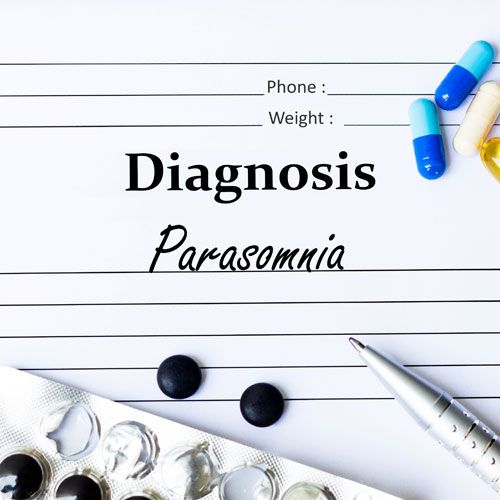Parasomnia

What is parasomnia?
This is something that occurs during sleep and is considered abnormal if it manifests itself regularly in ones personal life. It varies in complexity and how it presents itself.
This can be in several ways:
- Talking in your sleep
- Sleep Walking
- Teeth grinding (Bruxism) If you haven’t noticed your dentist may have
- Sleep terrors / nightmares
Parasomnias are divided into violent and non-violent. Both occur when the individual is in the REM sleep stage (rapid eye movement). This is the stage when we all dream however a person who is affected with Parasomnia will act out an often vivid dream whereas in normal sleep the motor system in the brain, for safety and self-preservation reasons, paralyses us to prevent this from happening. Acting out our dreams is also sometimes called REM sleep disorder.
It can be extremely worrying and distressing problem when the individual with Parasomnia violently acts out a vivid dream and attacks the person in bed next to them. This is considered a serious disease as it may cause injury to both parties and according to research if left untreated approximately 60% of sufferers will go on to develop Parkinson’s disease. REM sleep disorder can also be brought on by medication such as anti-depressants and antipsychotic medicine. A medication review may be helpful in reducing symptoms.
If you experience a person having an episode it is best not to wake them up suddenly as they may react violently. If safety allows, gently guide the person back to bed.
Treatment of Parasomnia by Stress Reduction
For whatever reason we often lead stressful lives, be it a child/ student preparing for exams, stress in the workplace or caring for relatives. In this situation, Cognitive Behavioural Therapy (CBT) would prove beneficial, allowing stress to be dealt with in a more positive and effective manner. Reducing this stress often alleviates the symptoms of Parasomnia.
Treatment of Parasomnia by positive air pressure
A person is often unaware that they have Obstructive Sleep Apnoea (OSA) or Upper Airway Restrictive Syndrome (UARS) until a sleep study has been carried out due to the Parasomnia. However, OSA/ UARS may also be the cause of the symptoms displayed, OSA/ UARS causes Oxygen deprivation in the heart and brain. The body adjusts by increasing heart rate and blood pressure which is also what happens in the presence of fear. It is difficult for the brain to determine whether the cause of the physical reaction is due to fear or Oxygen deprivation which manifests itself as a feeling of anxiety, even though the person remains asleep. This anxiety conjures up vivid frightening thoughts and may be displayed as night terrors or Parasomnia disorders. In this instance, by treating the Sleep Apnoea/ UARS, adequate oxygen will be restored to the main organs during sleep, which will result in the feeling of fear being extinguished, resulting in a calm, normal, restorative sleep.
N.B UARS is a milder form of Sleep Apnoea.
Complete our Sleep Apnoea Assessment to see if you have any signs and symptoms of this serious Sleep Disorder.
Request a call back from one of
our experts at Ventility Sleep Solutions

Ventility Limited, Black Lane Road,
Pentre Broughton, Wrexham LL11 6BA



 Follow us on Twitter
Follow us on Twitter

 info@ventility.co.uk
info@ventility.co.uk